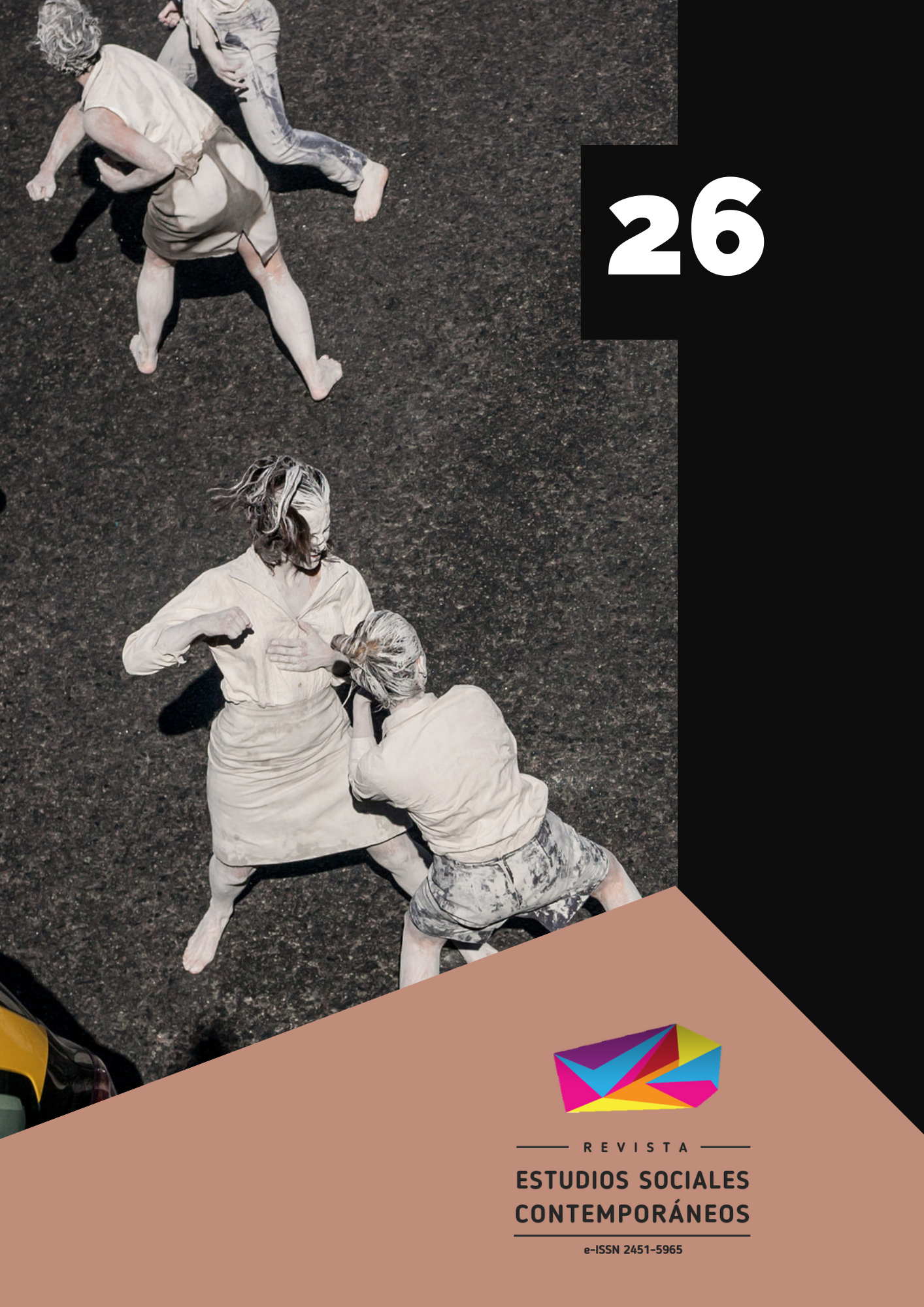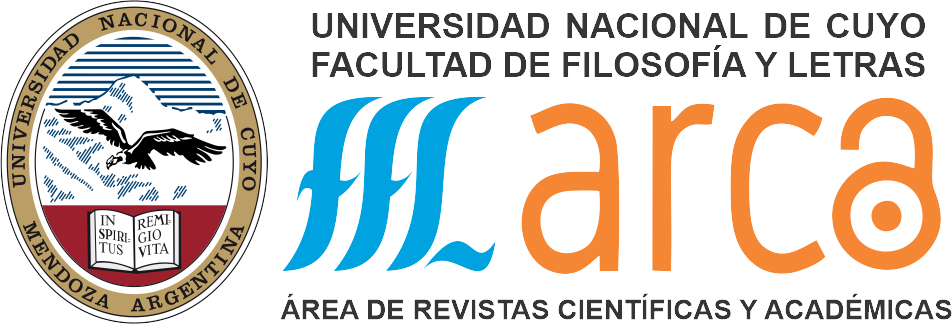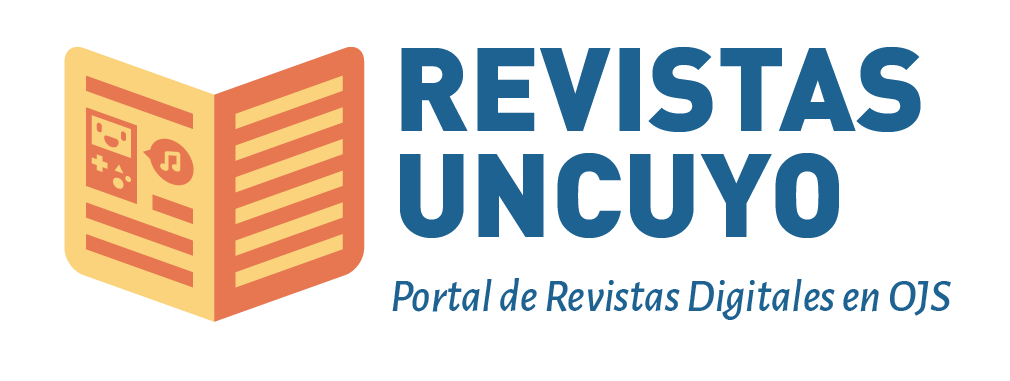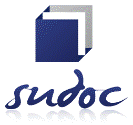Internationalization at home: local scientific meetings and transnational frontiers of knowledge circulation
analysis of institutional indicators at an Argentine university
DOI:
https://doi.org/10.48162/rev.48.037Keywords:
scientific meetings, knowledge circulation, internationalization, institutional capital, universityAbstract
The debate on communication modalities and scientific information systems has recently been renewed in Latin America and other parts of the world, especially as a result of the open access movement and the criticism of the overweighting of the indexed publications system as a source of institutional and individual recognition. In this framework, this article investigates an aspect less explored by the specialized literature: the active role played by the “scientific meetings” in the processes of knowledge circulation. The quantity and variety of meetings (inter, transdisciplinary or specialized) has increased in recent decades in both the so-called "central" and "peripheral" countries and stimulated its geographic scales of implication, generating a kind of quality gradient that usually it is closely followed also by the policies and the scientific and university institutions themselves. Starting from drawing a conceptual approach from scientific meetings as preferred routes for the knowledge circulation and critically examine the international quality model implicitly established, this work will advance reflecting on the called “internationalization at home” from inquire the relationship-tension between the international scope of that meetings and their local/ institutional contexts of realization. The analytical lens is focused on the National University of San Martín, Argentina, examining its different formats of scientific meetings executed, their geographical scope (differentiating the local/national and regional/international), as well as their academic units of execution/organization and respective disciplinary areas, based on the implementation of a set of circulation institutional indicators derived from the so-called Cuyo Manual.
References
ALGAÑARAZ, V. (2019). Las prácticas evaluativas del programa incentivos in situ: geo-grafía y geología del proceso de categorización. En BEIGEL, F. y BEKERMAN, F. (coords.). Culturas Evaluativas. Impactos y dilemas del Programa de Incentivos a Docentes-Investigadores en Argentina (1993-2018). Buenos Aires: CLACSO – IEC CONADU.
BEIGEL F. y ALGAÑARAZ V. (2020). Nuevos indicadores para reconocer las modalidades de interacción social de la universidad y coproducción de conocimientos. Propuestas y alcances del Manual de Cuyo. Papeles del Observatorio. Revista del Observatorio Ibe-roamericano de la Ciencia, la Tecnología y la Sociedad (OCTS) de la Organización de Estados Iberoamericanos (OEI), N° 18, pp. 52-58. Consultado en: https://observatoriocts.oei.org.ar/wp-content/uploads/2020/11/Papeles-18-Web-FINAL-DEF.pdf
BEIGEL F. y GALLARDO O. (2020). Productividad, bibliodiversidad y bilingüismo en un corpus completo de producciones científicas. Revista Iberoamericana de Ciencia, Tecno-logía y Sociedad, N° 46, (en prensa).
BEIGEL, F. (2013). Centros y periferias en la circulación internacional del conocimiento. Nueva Sociedad, N° 245, pp. 110-123. Consultado en: https://nuso.org/media/articles/downloads/3944_1.pdf
BEIGEL, F. (2018). Las relaciones de poder en la ciencia mundial. Un anti-ranking para conocer la ciencia producida en la periferia. En Revista Ciencia, Tecnología y Política. Año 2, N° 3. Consultado en: https://revistas.unlp.edu.ar/CTyP/article/view/9159/7940
BEIGEL, F. (2019). Indicadores de circulación: una perspectiva multi-escalar para medir la producción científico-tecnológica latinoamericana. En Revista Nueva Sociedad. N° 274, 13-28. Consultado en: https://www.nuso.org/media/articles/downloads/TG.Beigel_274.pdf
BOURDIEU, P. (2003) El oficio de científico. Ciencia de la ciencia y reflexividad. Barcelo-na: Anagrama.
CASTILLO, J. (2018). Memorias de congresos versus artículos científicos: análisis del caso ecuatoriano. Bionatura. Latin American Journal of Biotechnology and Life Sciences. Consultado en: http://revistabionatura.com/2018.03.01.6.html
CROWTHER, P.; JORIS, M.; OTTEN, M.; TEKKENS, H. y WÄCHTER, B. (2001). Internationalisa-tion at Home: A Position Paper. Amsterdam: EAIE
DE WIT, H. (2011). Globalización e internacionalización de la educación superior. Revis-ta de Universidad y Sociedad del Conocimiento, Vol. 8, N° 2, pp. 77-84.
DIDOU AUPETIT, S. (2016). Integration and productivity of international academics in Mexico. En YUDKEVICH, M.; ALTBACH P. y RUMBLEY L. (ed.). International Faculty in Higher Education: comparative perspectives on recruitment, integration and impact. Estados Unidos: Routledge.
FERNÁNDEZ LAMARRA, N. y ALBORNOZ, M. (2014). La Internacionalización de la Educa-ción Superior y la Ciencia en Argentina. En Didou Aupetit, S. y de Escobar, V. (coords.) Internacionalización de la Educación Superior y la Ciencia en América Latina y el Cari-be: Un Estado del Arte. Caracas: IESALC-UNESCO.
GINGRAS, Y. (2016). Bibliometrics and research evaluation. Uses and abuses. London: MIT.
GÓNGORA, E. (2012). Prestigio académico: estructuras, estrategias y concepciones. El caso de los sociólogos de la UAM. México: ANUIES.
HILGARTNER, S. (1990). The Dominant View of Popularization: Conceptual Problems, Political Uses. Social Studies of Science, Vol. 20, N° 3, pp. 519-539.
KREIMER, P; LEVIN, L; JENSEN, P (2011). Popularization by Argentine researchers: the activities and motivations of CONICET scientists. Public Understand. Sci. N° 20, vol. 1, pp. 37–47
LEMARCHAND, G. (1996). La importancia política de la divulgación y difusión científica y tecnológica. Redes. Vol. 3, N° 7, pp. 161-192.
MARTÍN ZURRO, A. (1998). Congresos científicos. ¿Qué esperamos de ellos? FMC, N° 5, pp. 283-284.
MENDIZÁBAL, V. (2018). De la torre de marfil a la arena pública: El papel de los cientí-ficos en la comunicación de la ciencia y la tecnología. Vol.7, N° 13, pp. 9-26.
MERTON, R. (1973). The Sociology of Science: Theoretical and Empirical Investigations. Chicago: University of Chicago Press.
PRIETO MARTÍNEZ, L.; VALDERRAMA GUERRA C. y ALLAIN MUÑOZ S. (2015). Internaciona-lización en casa en la educación superior: Los retos de Colombia. Revista Internacional de Cooperación y Desarrollo, N° 2, Vol. 2, pp. 105-135.
RÀFOLS, I. (2019). S&T Indicators 'In the Wild': Contextualisation and Participation for Responsible Metrics. Research Evaluation. Vol. 28, N° 1, pp. 7-22. Consultado en: https://doi.org/10.1093/reseval/rvy030
ROBINSON GARCÍA, N. y RÀFOLS, I. (2019). The differing meanings of indicators under different policy contexts. The case of internationalisation. En Daraio, C. y Glänzel, W. (eds.), Evaluative informetrics: the art of metrics based research assessment. Fest-schrift in honour of Henk F. Moed. Consultado en: https://arxiv.org/ftp/arxiv/papers/1909/1909.10274.pdf
SIMÓ MIÑANA J. (1999). Comunicaciones científicas a congresos científicos: algunas propuestas de mejora. Aten Primaria. N° 23, pp. 371- 375.
Fuentes documentales
CONICET (2020). Bases y condiciones. Convocatoria de Reuniones Científicas y Tecnoló-gicas 2021. Consultado en: https://www.conicet.gov.ar/presentacion-a-la-convocatoria-de-reuniones-cientificas-y-tecnologicas-2020/
CRES (2008). Declaración Final de la Conferencia Regional de Educación Superior en América Latina y El Caribe. Consultado en: https://www.oei.es/historico/salactsi/cres.htm
MINCYT (2015). Programa de Evaluación Instituciona. Informe de Evaluación Externa Universidad Nacional de San Martín. Buenos Aires: MINCYT.
UBA (2019). Resolución N° 2116-2019/CS. Normativas de propuestas de reuniones cien-tífico-tecnológicas y de vinculación-transferencia. Consultado en: http://investigacion.filo.uba.ar/reuniones-cient%C3%ADficas
UNSAM (2018). Web institucional de UNSAM. Portal de noticias sobre reuniones científi-cas. Consultado en: http://noticias.unsam.edu.ar/2018






















